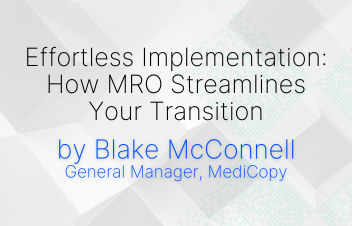Imagine a healthcare organization committed to improving patient outcomes while controlling costs. They have the right intentions, yet gaps in care coordination lead to preventable hospital readmissions, and they struggle to meet the quality benchmarks required for value-based care contracts. The challenge? Their data is fragmented across multiple systems, making it difficult to gain a comprehensive picture of their performance and where to improve.
This scenario is common. More than 90% of hospitals and nearly 80% of office-based physicians use Electronic Health Records (EHRs), yet few are fully leveraging the power of EHR data to drive success in value-based care. The key to unlocking better performance lies in transforming EHR data into actionable insights that support quality reporting, population health management, and financial optimization.
The Role of EHR Data in Value-Based Care
EHR data plays a pivotal role in supporting healthcare organizations within value-based care models by:
- Enhancing Risk Stratification – EHR data helps identify high-risk patients based on chronic conditions, medication adherence, and clinical indicators, enabling earlier interventions.
- Optimizing Care Coordination – A unified view of patient history across providers allows for smoother transitions of care, reducing unnecessary tests and hospitalizations.
- Driving Quality Reporting and Performance Metrics – EHR data is essential for tracking HEDIS, eCQMs, and STAR ratings, ensuring compliance with payer and regulatory requirements.
- Identifying and Closing Care Gaps – Real-time alerts help ensure patients receive preventive screenings and chronic disease management interventions, directly impacting quality scores and reimbursement.
- Improving Financial Performance – Data-driven insights enable organizations to reduce avoidable hospitalizations, emergency department visits, and unnecessary procedures, improving financial sustainability.
Extracting and Standardizing EHR Data for Maximum Impact
To fully harness the potential of EHR data, healthcare organizations must implement a structured approach to data extraction, processing, and integration. The process includes:
- Connecting to Multiple EHR Systems
Ensuring interoperability with various EHR platforms allows for seamless data flow across different providers, creating a unified patient record.
- Extracting Structured and Unstructured Data
Capturing both structured data (e.g., lab results, medication lists) and unstructured data (e.g., clinical notes) ensures a comprehensive dataset that reflects patient history, provider interventions, and treatment outcomes.
- Cleaning and Normalizing Data
Data integrity is critical for accurate reporting and decision-making. Leveraging AI-driven tools and Natural Language Processing (NLP) helps standardize and validate data, eliminating inconsistencies and gaps that could impact quality measurement.
- Mapping Data to Standard Formats
Aligning data with industry standards such as FHIR (Fast Healthcare Interoperability Resources) and HL7 ensures interoperability and facilitates easier data exchange across healthcare systems.
- Storing and Structuring for Analytics
A well-structured data model allows for efficient use in population health management, care coordination, and predictive analytics, ensuring organizations maximize the value of their EHR investments.
How MRO Elevates Data Quality in Value-Based Care
Effectively managing EHR data in value-based care requires expertise, technology, and a commitment to data integrity. MRO supports healthcare organizations by:
- Seamlessly integrating clinical and claims data to ensure a complete, accurate patient picture.
- Enhancing real-time gap closure through automated data exchange and provider alerts.
- Ensuring compliance and maximizing financial performance by optimizing risk adjustment, quality measure tracking, and regulatory adherence.
- Improving data quality and consistency through robust extraction, cleaning, and normalization processes that eliminate inconsistencies and enhance reliability.
Conclusion
EHR data is a foundational component of value-based care, but its full potential is only realized when organizations have the right strategies in place for data extraction, standardization, and integration. By implementing a structured approach to managing EHR data, healthcare providers can enhance care coordination, improve risk stratification, and streamline quality reporting. MRO’s expertise in data quality and interoperability ensures that organizations can unlock the true value of their EHR investments, leading to better patient outcomes and financial sustainability.
The above blog post contains research and contextual conclusions provided by Chinmay Hunasgi, Senior Manager, Product Management.



